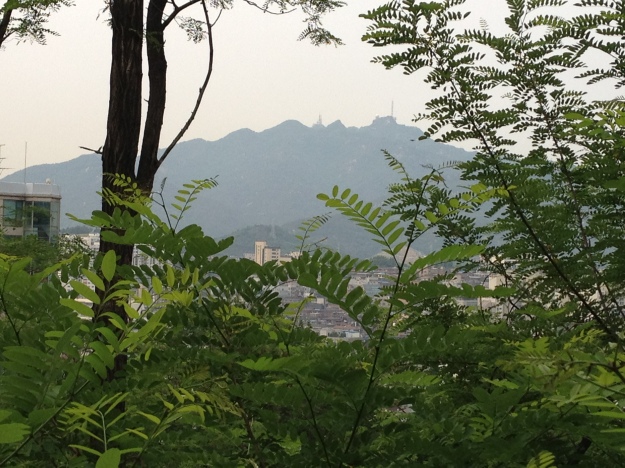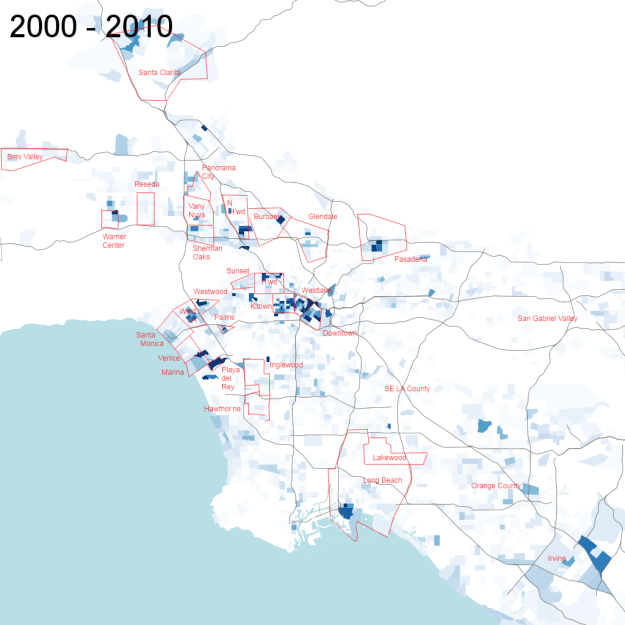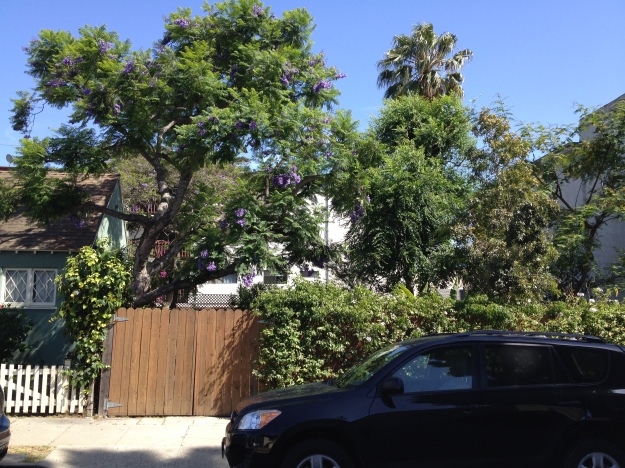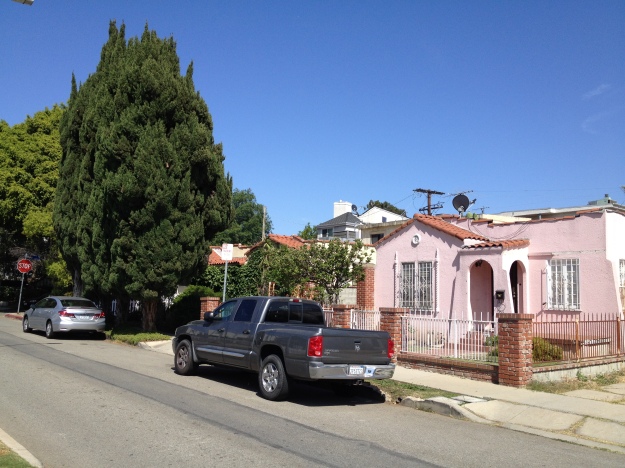Almost a year ago, Torre David briefly flashed through the US city planning universe, thanks to an article on Atlas Obscura that linked to a short film.
Torre David refers to a complex of high-rise buildings in Caracas that were abandoned in the middle of construction in 1994 when the Venezuelan financial sector collapsed. By historical accident, the project was suspended at a point where the buildings were substantially complete. The structural frames and floor slabs were done, stairs (but not stairwells) were finished, and portions of the curtain wall had been attached. The site sat in suspended animation for 13 years until a rainy night in 2007, when people evicted from another squat converged on the tower. The guards relented and allowed them in.
Torre David: Informal Vertical Communities (Lars Muller Publishers) by Alfredo Brillembourg and Hubert Klumpner, with photos by Iwan Baan, offers an attempt at the detailed study warranted by this unusual community. The book is split into four main parts: Past, Present, Possibility, and Potential, including a graphic novella in the first part.
Past and Present
Thankfully, the overwhelming majority of the book is dedicated to the past and present of Torre David, allowing the community’s history and present condition to speak for itself. The authors also provide geographic and social context for Torre David – its place in Caracas, the geography and growth of Caracas, the impact of political upheavals such as the policies of Hugo Chavez. The photographs, for their part, are simply stunning.
The authors are the cofounders of Urban-Think Tank, and Chair of Architecture and Urban Design at the Swiss Federal Institute of Technology in Zurich, lending a heavy architectural influence to the analysis. In this regard, the book truly shines. Crisp graphics paint a clear, detailed spatial picture of the buildings. The researchers have surveyed every occupied floor of each building in the complex, including the ingeniously improvised electrical and water systems. Flipping back and forth through these graphics, one can’t help but lament that similar respect wasn’t shown to that other famous informal vertical settlement, the Kowloon Walled City, before it was demolished.
Physically, the complex consists of a ten-story parking garage, an atrium intended to be the main entrance, and three buildings. The buildings are known as Edificio A (the 45-story high rise most often referred to as Torre David), Edificio B (19 stories), and Edificio K (19 stories, connecting the parking garage to Edificios A and B on floors 6-17). Access is via the parking garage, where residents can hire taxis or motorbikes to take them up to the tenth floor, then through Edificio K and across vertiginous 12-inch gap in the floor to Edificios A and B.
The initial occupation focused on Edificio A, now occupied up through the 28th floor, which offers a gym and children’s play space with an airy view. Vertical circulation is through only one staircase, with the other staircase having been converted to a shaft for utilities. Recently, apartment construction has been focused on Edificio B and the Atrium (imagine building an apartment on one of the upper levels of your local indoor mall). In addition to apartments, there are also several small stores, a hair salon, and a church.
Most media refers to Torre David as a vertical slum, but the photographs reveal a wide size and variety of housing. Apartments near the edge of the structure are more desirable, since they offer better natural light and ventilation relative to those near the building core. Apartments range from several bedrooms down to what US city dwellers would know as singles, bachelors, and studios. As time passes, apartments are upgraded with amenities like bathrooms, kitchen sinks, dishwashers, and clothes washers.
Some apartments are undeniably spartan, with minimal furnishings, unfinished concrete floors, walls of large red clay bricks, and no ceiling other than the preexisting steel trusses and concrete deck. However, other residents have invested a significant amount of time and money into their dwellings, installing linoleum floors, floor or wall tiles, and drop ceilings. You could post these places on Craigslist in New York or San Francisco at normal rents and have a lot of interested inquiries. (Actually, how many people in New York or San Francisco would like the opportunity to get an unimproved space and turn it into an apartment over time?) And in any case, however improvised the tenant improvements might be, residents of Torre David have a solid roof over their heads and solid floor under their feet, something not enjoyed by all barrio dwellers.
Converging on Formality
The authors call Torre David an informal vertical community, but it’s an interesting question to ask what we mean by formality in the first place. Certainly, the residents of Torre David do not submit plans to the Department of Building and Safety and dial them up for shower pan inspection when building a bathroom. Yet it would also be inaccurate to describe Torre David as chaotic or anarchical. Far from it.
From the very beginning, the viability of the occupation of the complex depended on social networks. On the day it was initiated, it depended on the ability of squatters to muster a large enough crowd that the complex guards assigned to keep people out would be overwhelmed by the volume of human desperation confronting them.
Torre David also has its own bureaucratic structure, which the authors describe as an authoritarian democracy. The governing cooperative, the Asociasion Cooperativa de Vivienda “Casiques de Venizuela” RL, was officially registered in 2009. Most residents are Evangelical Pentecostal Christians and attend services in the complex church, presided over by Alexander Daza, who is also the president of the cooperative. (The book is notably silent on Daza; perhaps this is the price of access, perhaps he is simply not that interesting.) An inner circle around Daza makes decisions, and then lower level of leadership and floor coordinators work with residents to maintain space and utilities.
Each family pays $15 per month to the cooperative for services including electricity, water, and security. Utilities were pirated at first, but the cooperative now purchases them and employs its own crews to maintain the electrical and water systems of the buildings. The cooperative also employs its own security guards to control access to the compound. Residents can be evicted if they accrue enough violations of a general code of conduct.
The cooperative has guided development of the complex – for example, it has decided that no space above the 28th floor of Edificio A will be occupied. In the beginning, anyone could apply for occupancy every Monday from 5pm to 8pm; now, few new residents are admitted unless there is a vacancy. When the first residents moved in, they lived in tents while they outfitted new apartment space, but that practice was ended in 2012.
The development of social and bureaucratic networks is fascinating, and makes one wonder how we, as a society, decide what is and what isn’t a formal community. The cooperative exists in a very strange place, as a legally recognized entity that does not officially own the property it manages. Yet the increasing formality with which the cooperative approaches development suggests that if the government doesn’t exist, you have to invent one. Torre David may be called an informal squat, but the cooperative provides services in exchange for mandatory fees, enforces socially accepted laws, provides security, and considers resident input. Is that not a formal community? Is that not a government?
Possibilities and Potential
The analysis of possibilities and potential is notably weaker, but overall still interesting and well-done. Happily, the authors largely avoid the impulse to shoot the moon with big, costly design-based solutions, instead focusing on incremental improvements to residents’ lives.
For example, the construction of a dumbwaiter system in the existing elevator shafts offers great potential. They are mechanically simple, low-cost mechanisms that the cooperative could afford to maintain. They would alleviate the significant burden of climbing and transporting all goods up the stairs from the top of the parking garage on the 10th floor to the 28th floor. This would allow the cooperative to make use of the higher floors of the building for new apartments.
Incremental improvements to water and wastewater systems would also be beneficial. The lower levels of the parking structure often flood during rain storms, and the wastewater system was never finished properly.
However, for better or for worse, we are all captives of the age we live in. While the book does have a beneficial focus on working with residents to improve the complex, it also incorporates some of the questionable trends in modern planning.
For example, the authors note the unreliability of electric supply in Caracas, and in the name of sustainability suggest that the upper portion of Edificio A be outfitted with an array of small windmills that would provide power and run a pumped hydro energy storage facility. I’m not sure residents need to be dealing with construction and maintenance of wind-generation equipment on the side of their building. I’m also not sure why this is a sustainable solution, since it’s not available to the much larger portion of low-income Caracas residents that live in low rises. And I fail to see why sustainability should entail generating all of a building’s energy on-site. Why not generate it wherever it can be most efficiently generated? (The pumped hydro is pretty basic and could be used without the wind generation.)
I’m also not crazy about the aerial tramway concept. This technology has a place where topography and existing development make bus or rail transit impractical. However, the capacity of an aerial tram system is smaller and its geographic scope is going to be more limited.
Still, on the whole, the authors do a decent job with these sections. Maybe it’s just me, but I’m far more fascinated by how communities evolve on their own terms.
The Human Touch
If there’s anything missing from the book, it’s the human touch. Whereas City of Darkness tells the story of Kowloon Walled City through stories and interviews with former residents, leaving one to wish for better spatial understanding, Torre David provides a complete spatial analysis and a summary of the social structure, without much in the way of personal stories.
Perhaps, as a more complete social and economic unit than Torre David, Kowloon Walled City lends itself to a greater diversity of stories. Torre David is essentially just a residential building, with a few small retail establishments serving residents, while Kowloon Walled City was home to an astonishing variety of retail shops, noodle and fishball producers, metallurgists, dentists and doctors, and small factories.
But even at that, there are thousands of people living in Torre David, and it would have been nice to hear some of their personal stories – where they came from, why they chose to move to Torre David, how they view the community, their hopes for the future. It may be that it was easier to get Kowloon Walled City residents to open up, since the city’s fate had already been determined when City of Darkness was written. Residents of Torre David hope to stay in their adopted home, to which many view their claim as tenuous at best. Marginalized communities – or communities that have been labeled informal – are rightly suspicious when those who determine what is formal show up.
Buy This Book
If you’re interested in how urban communities emerge and evolve, spatially and socially, I recommend buying this book. When I got it last year, you had to order it through the Swiss publisher, but it looks like it’s available on Amazon now (and if the going price for City of Darkness is any indication, you might as well buy it as an investment). It’s a fascinating look at both an architectural anomaly and a developing urban community.
Note: for a substantially contrasting analysis of the tower, see this Jean M. Caldieron article.






































